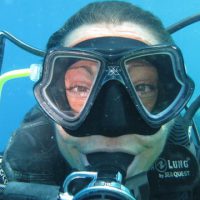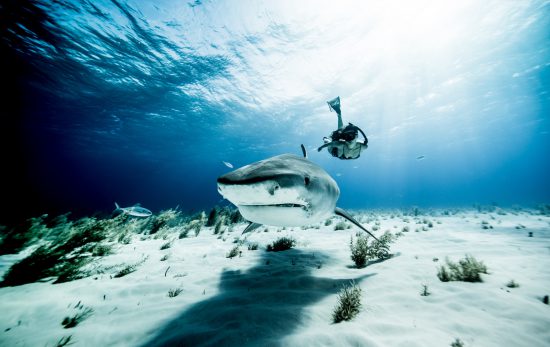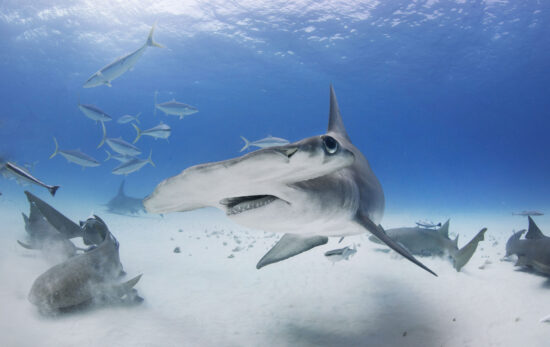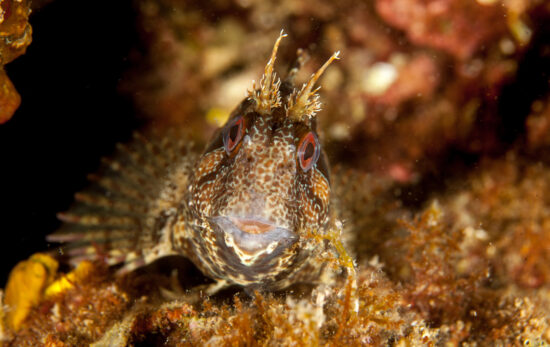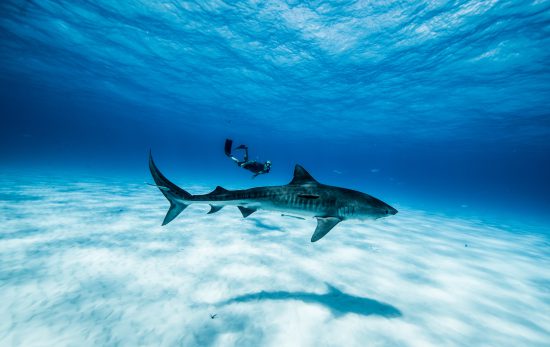One of the highlights of diving in New Zealand is the incredible marine biodiversity. Just as New Zealand is home to some of the largest marine species you’ll find in our oceans, it’s also home to an equally impressive array of critters and macro marine species which will keep macro underwater photographers enthralled dive after dive.
To whet your appetite for shooting macro, here are just a few of New Zealand’s most iconic little critters – they may be small in stature but what they lack in size, they more than make up for in uniqueness, character, behavioural displays and photogenics!
Scorpionfish
When it comes to grumpy looking bottom dwellers, the scorpionfish (Scorpaena papillosa) must be in the running for the title! This critter’s best form of defence (and attack) is the ability to adapt its skin colouration to match the surroundings. The incredible camouflage abilities of the scorpionfish mean that it can lay still and remain undetected to predators and it can stealthily creep up on unsuspecting prey.

Spiny sea dragon
These are probably the most iconic critters that divers want to sea in New Zealand. These elusive ‘dragons’ are generally found between 50-70m deep (165-245 ft) – sometimes even 100m+ deep (330 ft+)! In New Zealand however they are found in the shallower waters of the Milford Sound – the conditions in this area replicate those of the deep waters allowing sea dragons to uniquely inhabit these diveable depths.
Very little is currently known scientifically about Spiny Sea Dragons, they are recognisable by their long spiny body and long snout, and their vibrant orange skin with yellow and pink stripes.
Jason’s Nudibranch
The Jason mirabilis is a species of sea slug, known as an aeolid nudibranch. Like all aeolid nudibranch it is easy to identify Jason mirabilis by the cerata (spikey like appendages which cover the body).
Jason mirabilis can be found throughout New Zealand between depths of 3-40 m (100-130 ft). This nudibranch feeds exclusively on hydrozoon polyps. Jason mirabilis incorporates the hydrozoon stinging cells into its cerata which then becoming stinging themselves. This is one critter species that really ‘is what it eats!!’
Jason mirabilis display many different colours but most commonly the body is pink with pinkish white cerata.
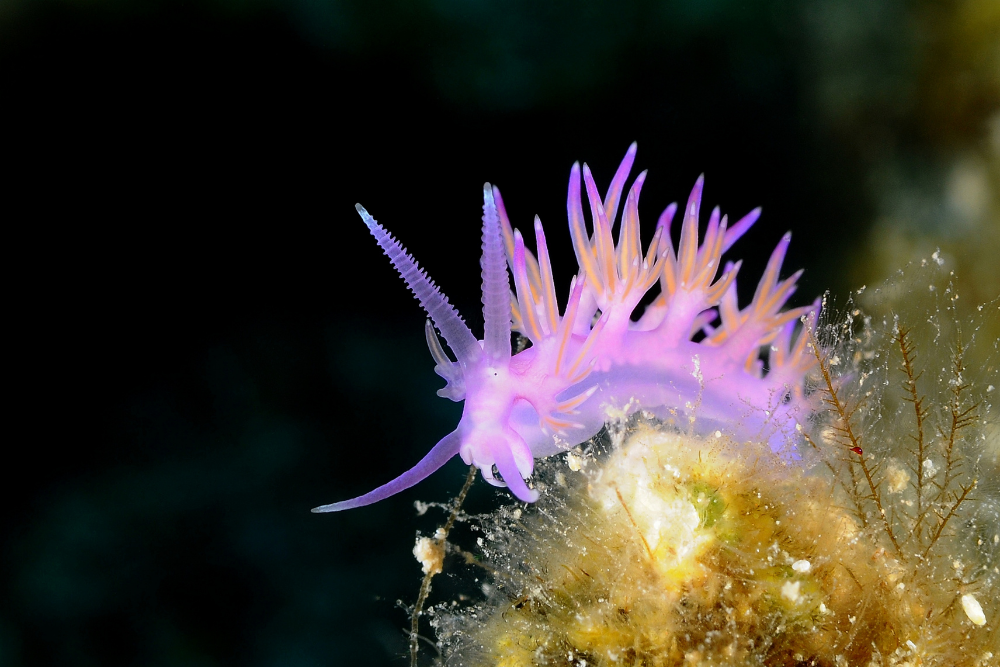
Hairy Seaweed Crab
Decorator crabs are often a favourite with underwater photographers, they can also be amusing to watch in action as they collect items to attach to their bodies! The hairy seaweed crab is the most common decorator crab seen in New Zealand rock pools. It can be found all along New Zealand’s coast line where it is usually hiding under boulders in amongst brown seaweed. Although you can find it during the day, it’s most active at night and most commonly seen during night shore dives.
In New Zealand’s warmer waters, you’ll find tropical decorator crabs which will decorate their bodies with soft corals and anemones. There are 43 different species of spider crabs (including decorator crabs) found in New Zealand.
Large bellied seahorse
The Large-Bellied Seahorse (Hippocampus abdominalis) is the largest seahorse of the 35 species known worldwide. Like all seahorses it has a prehensile tail which it uses to grasp onto seaweed and other items of detritus.
Because it can change colour to blend in with its environment, the seahorse can cleverly avoid detection by its predators. At the same time, it can ‘ambush’ its unsuspecting prey, which mainly consists of small marine crustaceans such as shrimps. Seahorses have no teeth and swallow their food whole, by sucking it up through their snout!

Zooanthid anemones
Not all photogenic critters in New Zealand are fish! New Zealand is home to a stunning array of Zooanthid anemones. Zoanthids look like tiny sea anemones. But while true sea anemones are solitary polyps, most zoanthids live in colonies like corals do. But zoanthids don’t produce a hard skeleton like the hard coral colonies. Instead, their tissues are leathery and composed partly of chitin (the same substance that insect exoskeletons are made of).
The typical polyp has a cylindrical body column, topped by a smooth, flat oral disk that is edged by short tentacles, usually in two rows close to one another. The oral disk is often in a contrasting, bright colour from the usually brown or drab tentacles. When the tentacles are extended these anemones look like underwater floral displays and are highly photogenic!
Moray eels
If you are fan of moray eels, you won’t be disappointed! New Zealand is home to five species of moray eel and all five species of moray can be found in the north-eastern part of the North Island.
The yellow moray is the most common coastal species and is frequently spotted by divers, along with the grey moray eel which is the smallest and most curious about divers!
The spotted moray and the mosaic moray eels are quite rare to see due to both species being extremely shy. The speckled moray is most commonly seen during night dives and stays hidden away during daylight hours.

Doris wellingtonensis Nudibranch
New Zealand is famous for its huge sea slugs and the Doris wllingtonensis is one of the most iconic. Also known as the warty nudibranch this is not the most beautiful sea creature but it is the largest sea slug found in New Zealand waters! The warty nudibranch is soft and slimy in appearance and it is covered in blister-like protrusions with exposed gills that are grey-orange in colour.
The warty nudibranch is often found in shallow waters, up to just 3meters (10 ft), where it is spotted under rocks or sitting on orange coloured sponges which it uses for camouflage and food!
Crayfish (Lobsters)
There are two species of crayfish (lobster) in New Zealand, the spiny red rock lobster (Jasus edwardsii) and the packhorse crayfish (Sagmariasus verreauxi).
The spiny red rock lobsters, are by far the more common and are found throughout New Zealand waters as well as parts of Australia. The packhorse crayfish can also be found throughout New Zealand but they’re far more common in the north. Packhorse are pretty easily distinguished from spiny reds in that they’re a green colour but the main difference is the size. Packhorse crayfish are the largest lobster species in the world and may grow up to a whopping 15kg (33 pounds). Both species can be spotted by divers in rock crevices.
Which of these critters are on your bucket-list and which have you already checked off? Start planning your next critter photography dives in New Zealand by taking the Digital Underwater Photographer Specialty course and locating a local PADI dive shop.
